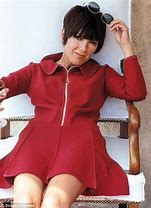
Mary Quant, the British designer who revolutionised fashion and epitomised the style of the Swinging Sixties, a playful, youthful ethos that sprang from the streets, not a Paris atelier, died on Thursday at her home in Surrey, in southern England.
Known as the mother of the miniskirt, she was 93. Her family announced the death in a statement given to the Press Association of Britain, saying that she had died “peacefully.”
England was emerging from its postwar privations when, in 1955, Ms Quant and her aristocratic boyfriend, Alexander Plunket Greene, both just out of art school, opened a boutique called Bazaar on London’s King’s Road, in the heart of Chelsea.
Ms Quant filled it with the outfits that she and her bohemian friends were wearing, “a bouillabaisse of clothes and accessories,” as she wrote in an autobiography, Quant on Quant (1966) – short flared skirts and pinafores, knee socks and tights, funky jewellery and berets in all colours.
Young women at the time were turning their backs on the corseted shapes of their mothers, with their nipped waists and ship’s-prow chests – the shape of Dior, which had dominated since 1947. They disdained the uniform of the establishment – the signifiers of class and age telegraphed by the lacquered helmets of hair, the twin sets and heels, and the matchy-matchy accessories — the model for which was typically in her 30s, not a young gamine like Ms Quant.
When she couldn’t find the pieces she wanted, Ms Quant made them herself, buying fabric at retail from the luxury department store Harrods and stitching them in her bed-sit, where her Siamese cats had a habit of eating the Butterick patterns she worked from.
Profits were elusive in those early years, but the boutique was a hit from the get-go, with young women stripping the place bare on a near-daily basis, sometimes grabbing new clothing from Ms Quant’s arms as she headed into the store. She and Mr Plunket Greene ran it like the coffee bars they frequented: as a hangout and a party at all hours, with a background of jazz.
And they made their window displays a performance, too, stalked by mannequins designed by a friend to look like the young women who were shopping there – “the birds,” in Ms Quant’s words, using the parlance of the times – figures with sharp cheekbones, mod haircuts and coltish legs, sometimes turned upside down or sprayed white, some with bald heads and round sunglasses, clad in striped bathing suits and strumming guitars.
Amateurs at accounting, along with everything else, the couple stashed their bills in piles, paying from the top down. Vendors were often paid twice, or not at all, depending on their place in the pile.
A decade later, Mary Quant was a global brand, with licenses all over the world – she was named an officer of the Order of the British Empire in 1966 for her contribution to British exports – and sales that would soon reach $20 million.
When she toured the United States with a new collection, she was greeted like a fifth Beatle; at one point she required police protection. Newspapers eagerly printed her aperçus and declarations: “Quant Expects Higher Hem,” The Associated Press declared in the winter of 1966, adding that Ms Quant had “predicted today that the miniskirt was here to stay.”
There was a Mary Quant line at J.C. Penney and boutiques in New York department stores. There was Mary Quant makeup – for women and men – packaged in paint boxes, eyelashes you could buy by the yard, and lingerie, tights, shoes, outerwear and furs. By the 1970s, there were bedsheets, stationery, paint, housewares and a Mary Quant doll, Daisy, named for Ms Quant’s signature daisy logo.
“The celebrity designer is an accepted part of the modern fashion system today, but Mary was rare in the 1960s as a brand ambassador for her own clothes and brand,” Jenny Lister, a co-curator of a 2019 retrospective of Ms Quant’s work at the Victoria & Albert Museum in London, said. “She didn’t just sell quirky British cool, she actually was quirky British cool and the ultimate Chelsea girl.”
“I grew up not wanting to grow up,” Ms Quant once said. “Growing up seemed terrible. To me, it was awful. Children were free and sane, and grown-ups were hideous.”
Barbara Mary Quant was born on February 11, 1930, in Blackheath, southeast London. Her parents, John and Mildred (Jones) Quant, were Welsh teachers who came from mining families and were determined that their two children, Mary and Tony, should follow conventional career paths.
But Mary wanted to study fashion. When she received a scholarship to the arts-focused Goldsmiths College (now Goldsmiths, University of London), her parents made a compromise: She could attend if she took her degree in art education (she studied illustration). There, she met Mr Plunket Green, a well-born eccentric (the philosopher Bertrand Russell was a cousin, as was the Duke of Bedford) who wore his mother’s gold shantung silk pajamas to class on the rare occasions he attended and played jazz on the trumpet – a character straight out of an Evelyn Waugh novel (Waugh was a family friend).
- The New York Times report











